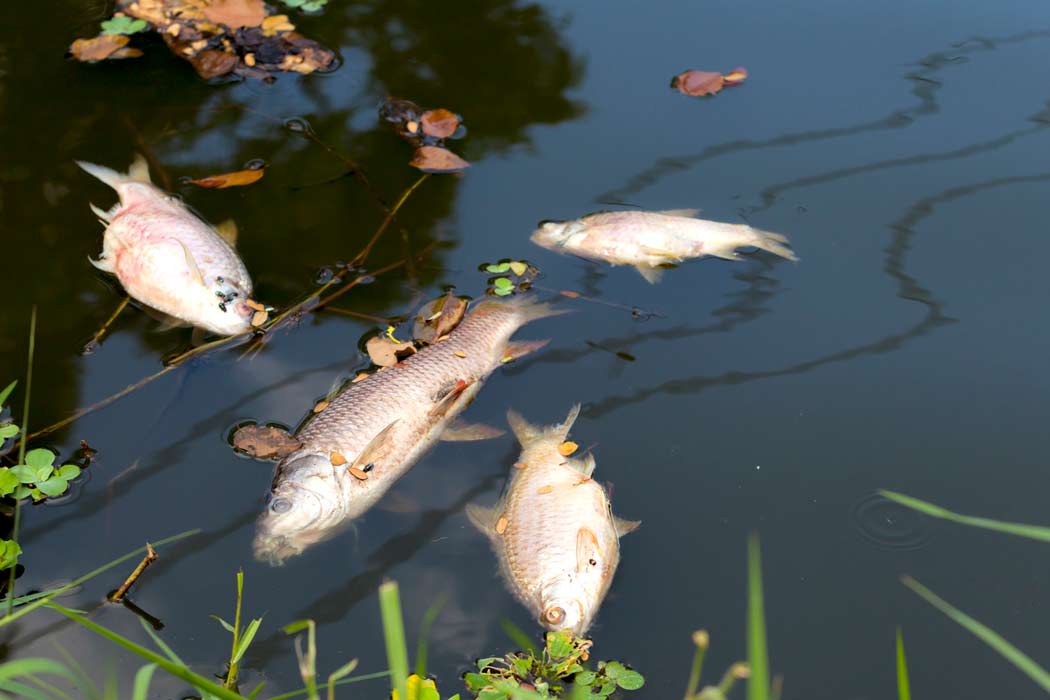From microbial biochemistry to recycling dead fish to manure-to-energy converters, here’s this week’s most surprising sustainability news.
Dead fish can help struggling ecosystems (Mother Jones)
In waterways where dams cut off salmon’s path to spawning and recreating, the fish population plummeted. As scientists have learned, that also harmed the entire ecosystems, affecting not only the aquatic life but even the growth of the surrounding woods. Migrating salmon play a crucial role in keeping forests healthy. When fish die, their bodies wash up on the banks, where trees’ roots absorb the nutrients, being particularly hungry for nitrogen, a key element for plant life. To save rivers and forests scientists use dead fish as an ecosystem health supplement, trucking along bags of carcasses, which they toss onto the nutrient-depleted banks.
Unfortunately, human activity can mess up ecosystems’ balance in more ways than one. Building dams can result in nitrogen depletion, but other actions can cause over-enrichment. Recent studies pointed out that over the past 70 years, humans doubled the amount of nitrogen added to the earth’s surface, which led to various environmental issues. The runoff of our nitrogen-rich agricultural fertilizers can cause algae blooms. When our nitrogen-loaded sewage effluent is discharged into rivers, which eventually carry it to the ocean, it over-fertilizes salt marshes, affecting the composition of salt marsh plants. As a result, some marsh grasses grow taller but with weaker roots. This process, scientifically known as eutrophication ultimately leads to the breakdown of the marshes and the decline of the ecosystem’s biodiversity. Coastal marshes serve as storm protectors as well as nurseries for fish and other marine creatures, so marshes’ health directly affects our own quality of life. Unfortunately, many coastal marshes are now in dire shape, and may have trouble adjusting to the sea level rise, studies note. These resilient ecosystems had adapted to many climate flukes over the millennia, but a century worth of anthropogenic activity may have forever changed the tide.
Meet the microbes that put dinner on your table (Scientific American)
Healthy microbial communities in soils can increase crop yields, help plants grow deeper roots, and extract water from dry earth. Moreover, microbes can help plants tolerate higher temperatures and droughts, and even fight off pests. These qualities will be invaluable as humanity faces warming climate and water scarcities, so the more we understand the microbe-soil inner workings, the better we will feed our planet’s growing population.
Representing the unseen majority of life on earth, microbes facilitate unique and indispensable transformations in the biogeochemical cycles of the biosphere. They break down organic matter into nutrients, which serve as food for the next generation of plants. Continuing that cycle is vital for agriculture and the overall planet’s heath. For example, when agricultural waste disposal is done properly—by composting it rather than burning—microbes can sequester carbon into the soil, instead of fires releasing it into the atmosphere as carbon dioxide. Soil organisms have attracted a lot of research in recent past, but so far science hasn’t been able to tap into that microbial power yet. Around the world the soil microbial communities are so diverse and complex, and our knowledge of them is so incomplete, that we can’t yet construct a coherent system of the microbial soil processes. So while soil research has come to the scientific forefront, we still have a lot to understand about the mighty microbes that put dinner on our table.
A truck that runs on cow manure (Modern Farmer)
A California organic farmer, Albert Straus, found a way to transform his cows’ poop into energy. Straus loads cow manure into a biodigester—a closed pond in which anaerobic bacteria chews through waste, converting starches and sugars into a mixture of methane and carbon dioxide, often referred to as biogas. The biogas is then pumped into an engine where it’s combusted in a way similar to gasoline, generating energy. Straus has been converting poop to energy for 13 years to power his farm, and eventually rebuilt a truck’s engine to run on manure-charged batteries.
This engineering feat may sound like a one-off marvel, but using biogas as an energy source has been discussed for a large part of the 20th century. The anaerobic fermentation of various organic wastes such as animal dung, agricultural refuse, and food leftovers produces a mix of CH4 and CO2, plus a compost-like concoction. The compost makes potent fertilizer while biogas can be used to generate energy, essentially being a cheap renewable resource. China, for example, relied on its farmer-produced biogas during its Great Leap Forward in the 1950s, building over seven million biodigesters, both household-size and industrial-scale ones. In the 1980s scientists were discussing the possibility of introducing biogas programs in Jogjakarta, Manila, Mexico City, Singapore, and Bangkok. And a 1990 paper noted that many countries of the African continent that don’t have oil deposits could greatly benefit from similar programs, which would also help reduce pollution from agricultural sources.
Will American farmers see a biogas boom any time soon? It’s hard to tell. Biodigesters are expensive, and can cost millions of dollars, but Straus says the prices can be brought down. “We’re working with a company based in Washington State to build and operate methane digesters on farms,” he told Modern Farmer.







